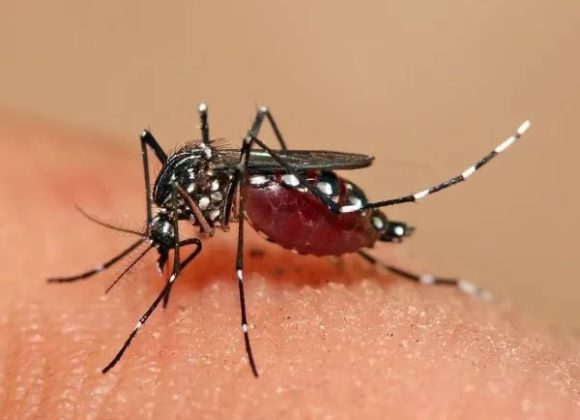Introduction:
The Anatomy of Health: 50,40,10 (50% diet, 40% Exercise and lifestyle, 10% drugs/ hospital) ~Dr. Paul Odumu
Sickle Cell Disease (SCD) is a genetic disorder that affects millions of people around the world. Nigeria alone accounts for 33% of the 300,000 annual global births with SCD, which makes her the fastest growing nation with the genetic disorder. Sickle Cell Disease has a prevalence of about 20 per 1000 births which means that 150,000 babies are born annually with SCD in Nigeria. While medical treatments have come a long way in managing the symptoms, nutrition plays a big role in complementing these treatments. In this article, we’ll delve into the significance of protein, arginine, and vitamin C in the management of SCD, shedding light on their potential benefits and how they contribute to overall well-being.
Individuals with SCD frequently experience insufficient nutrition due to increased body metabolic activities at the cellular levels, resulting in issues such as hindered growth, persistent pain, and heightened vulnerability to infections. Studies indicate that people with SCD require a greater intake of calories and essential micronutrients compared to the general population. Micronutrients encompass vitamins and minerals essential for regular growth in living organisms. An improved dietary regimen can guarantee that people with SCD receive the essential nutrients necessary to avert deficiencies, consequently reducing the risk of disease exacerbation. Moreover, complications arising from the disease, like leg ulcers and avascular necrosis, mostly affecting the hip and shoulder joints, can be prevented by adequate nutrition.
The Power of Protein:
Protein is an essential component of a healthy diet, but its importance is magnified for individuals living with SCD. Proteins are the building blocks of the body. They play a pivotal role in the body’s growth, repair, and immune functions. For those with SCD, a diet rich in high-quality protein sources like red meats, poultry, fish, eggs, dairy( milk, cheese and yoghurt) and plant-based alternatives like beans, can aid in maintaining optimal health. In SCD, it is important to have adequate amounts of protein in each meal. For people living with SCD in Nigeria, it will be nice to always have a pot of beans on fire as a readily available source of protein because of its affordability, and can be taken as a whole meal or part of a meal. Beans can also be delivered in different delicacies, for example, moimoi and akara or kose( bean cakes) and taken with Tom Brown( made from guinea corn, millet, groundnuts and soybeans, and can be prepared as porridge).

Protein supports red blood cell production, which is particularly crucial for those with SCD who experience increased destruction of these cells due to their abnormal shape. Additionally, incorporating protein-rich foods can help fortify muscles and boost energy levels, contributing to an improved quality of life.
The Role of Arginine:
Arginine is an amino acid that holds promise in managing SCD. Research suggests that arginine contributes to the dilation of blood vessels, promoting better blood flow and muscle relaxation, potentially reducing the risk of vaso-occlusive crises, a common complication of SCD. It does this by enhancing nitric oxide production from arginine, which supports all these. Nitric oxide is converted into nitrates which helps better circulation. Foods rich in arginine include nuts: Peanuts (groundnuts), cashew nuts, walnuts, pecans, almonds, hazelnuts; seeds: Sesame seeds, watermelon seeds, pumpkin seeds, sunflower seeds. So the next time you eat watermelon, eat the seeds as well. They are crunchy and generally taste good. Legumes: Soybeans, peas; and whole grains: Guinea corn, corn, millet, oats, brown rice. Arginine is also found in most protein-rich foods. It’s however important to consult with a healthcare professional when considering arginine supplements.

Vitamin C’s Immune-Boosting Potential:
Vitamin C, a powerful antioxidant, plays a vital role in supporting the immune system and overall health. For individuals with SCD, maintaining a strong immune system is paramount to prevent infections and other complications. Vitamin C aids in the absorption of nonheme iron- the type of iron from plant-based sources such as leafy greens- which is important since iron deficiency exacerbates the symptoms of SCD. Including vitamin C-rich foods such as drinking a glass of orange juice or any citrus fruits, strawberries, bell peppers, spinach and broccoli with your meals can help enhance iron absorption and provide an extra layer of immune defense. Vitamin C is also needed for the growth and repair of tissues in all parts of the body. It produces a protein called collagen that makes the skin, tendons, ligaments and blood vessels necessary for wound healing as in leg ulcers with SCD.

Balancing Act: Customizing Your Diet
Eating right in SCD doesn’t mean you have to be eating what you don’t like. It means giving your body the nutrients it needs in the right proportions by eating the right foods prepared in a way that tastes good to you so you can be motivated to eat. It also means avoiding putting trash in your body. Snacks like biscuits, buns, sweets and soda (soft drinks) don’t add any value to your body. This doesn’t mean you can’t take them but you can limit how often you take them to like once or twice in two weeks. You can replace them with healthy snacks like roasted/boiled peanuts, cashew nuts, peanut bars, sesame bars, dates(dabino), fruit juices and yoghurt.
While protein, arginine, and vitamin C offer potential benefits for managing SCD, it’s essential to remember that no single nutrient is a magic bullet. A well-rounded, balanced diet that incorporates a variety of nutrient-rich foods is key. And consistency is very important to getting a good result.
Conclusion:
Nutrition plays an integral role in the comprehensive management of Sickle Cell Disease. The combination of protein, arginine, and vitamin C can contribute to improved red blood cell production, enhanced blood flow, and a stronger immune system. As research continues to uncover the intricate connections between nutrition and SCD, individuals and their healthcare teams can work together to create personalized dietary strategies that promote overall well-being and help manage the challenges of this complex condition.





